
HOME





HOME
|

|

|

|

|
|
P R O F I L E |
||||
|
 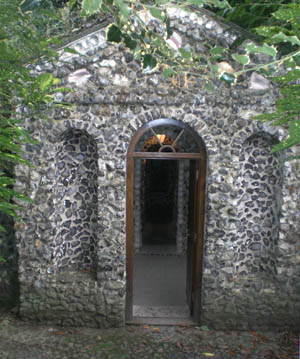 Scott's Grotto
Scott's Grotto28-34 Scotts Road Ware Hertfordshire United Kingdom SG12 9JQ Telephone: 01920 464131 Scott's Grotto in Ware is a Grade I listed building and comprises a series of six interconnected underground chambers . It extends into the chalk and dates from the 1760s. The surrounding gardens and structures are Grade II* listed. The following is from Scott's poem 'The Guardian' Where, 'midst thick oaks, the subterraneous way To the arch'd grot admits a feeble ray; Where glossy pebbles pave the varied floors, And rough flint-walls are deck' with shells and ores. And silvery pearls, spread o'er the roofs on high, 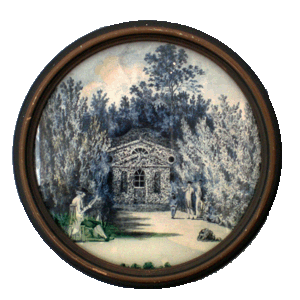 Glimmer like feint stars in a twilight sky;
Glimmer like feint stars in a twilight sky;Form noon's fierce glare, perhaps, he pleas'd retires, Indulging musings which the place inspires. The grotto is set into the northeast face of a hill, and comprises an entrance hall and a series of six chambers extending over 65 feet (20 m) into and 30 feet (9.1 m) below the chalk hillside, together with an intriguing array of air shafts, light wells and inter-connecting passages. The chambers are decorated with shells, stones such as flint and fossils, and coloured glass. A plan drawn in 1900 calls the six chambers the "Council Chamber" (a circular chamber 12 feet (3.7 m) in diameter to the right of the entrance, with a domed roof light), and 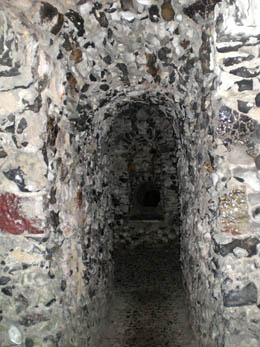 smaller chambers to the left of the entrance are named the "Committee Room No 2" (a square chamber with niches) and the "Refreshments Room"; on the centreline, connected by an air shaft, are the "Consulting Room", the "Committee Room", and the "Robing Room". smaller chambers to the left of the entrance are named the "Committee Room No 2" (a square chamber with niches) and the "Refreshments Room"; on the centreline, connected by an air shaft, are the "Consulting Room", the "Committee Room", and the "Robing Room".
The grotto was formerly in the grounds of Amwell House. The garden construction was completed by John Scott (1731 - 1783), an 18th-century Quaker poet who inherited Amwell House from his father in 1768. Scott's father had moved his family out of London to avoid the health risks then prevalent in the large city. Besides the grotto, Scott also had other romantic features built in his garden for contemplation, including an octagonal gazebo on the hillside above. Shells and minerals were collected from Devon, cockle shells and quartz from the Exe Estuary and melted glass and rockwork obtained during the construction process. 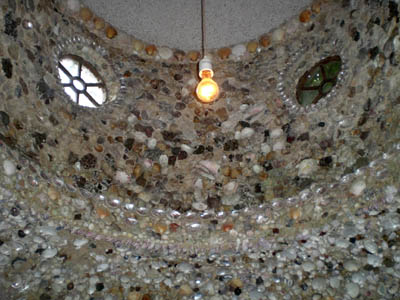 Scott initiated a visitor book which lists 3,000 visitors from 1779 to 1787. Samuel Johnson was one such eminent guest in 1773, describing it as a "fairy hall", commenting that none but a poet could have such a garden. For Scott the construction of the grotto was a chance to provide employment for local labourers at the time as well as to create a mystic structure that would entice his friends out of London to visit. The local parish was Amwell and Scott of Amwell as he became known, wrote the poem Amwell, one of his best known, in the summerhouse that lies atop the grotto. When Scott was on his deathbed his obsessively religious brother incited him to repent his frivolous life, which included poetry and grotto building! Scott initiated a visitor book which lists 3,000 visitors from 1779 to 1787. Samuel Johnson was one such eminent guest in 1773, describing it as a "fairy hall", commenting that none but a poet could have such a garden. For Scott the construction of the grotto was a chance to provide employment for local labourers at the time as well as to create a mystic structure that would entice his friends out of London to visit. The local parish was Amwell and Scott of Amwell as he became known, wrote the poem Amwell, one of his best known, in the summerhouse that lies atop the grotto. When Scott was on his deathbed his obsessively religious brother incited him to repent his frivolous life, which included poetry and grotto building!
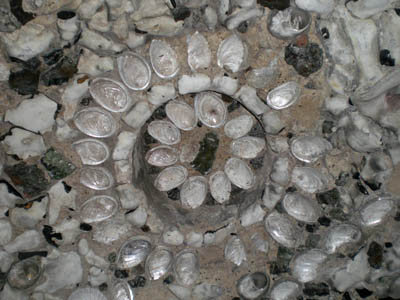 The house and grounds were inherited by Scott's daughter Marie. The nearby Scotts Road was built after she died in 1863 and the land was acquired for development. The grotto was opened to visiting tourists in the 19th century for sixpence a time. Description at the time included a Hermit's Cave and Quaker's Room. Modern houses were built in Scotts Road in the 1960s and 1970s; originally the builders intended to demolish the grotto to build two houses, but the local council intervened and the grotto was left in a patch of open ground. The entirety was taken over by the East Hertfordshire District Council in 1974 when they carried out urgent repairs. The local Ware Society subsequently initiated a plan for major restoration resulting in it being re-opened by Lord Montagu of Beaulieu in 1990. The works included a reconstruction of the entrance hall that had been demolished in 1960. A piece of the Berlin Wall that came down in 1990 has been included in the restoration of the entrance hall. Also included were shells donated from the Channel Islands, following an appeal on radio. 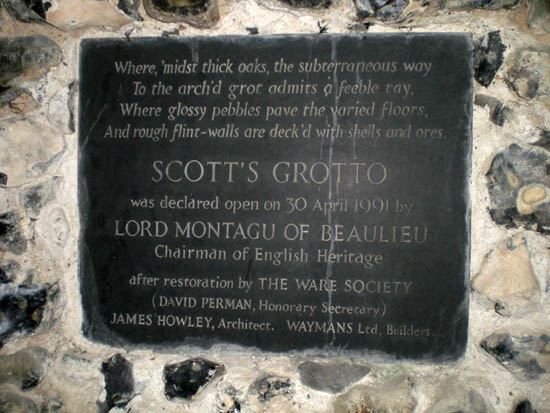
Today the grotto is open on Saturdays during the summer. The Ware Society publish a guide by David Perman, one of the long-term stalwarts of the restoration and conservation movement locally. When visiting, guides give an excellent interactive commentary on the grotto and summerhouse and guests are left to contribute to the society conservation fund, rather than pay a fixed entrance fee. The grotto is not connected underground to the summerhouse above - yet.... Illustrations: 1. The restored Grotto entrance 2014. 2. Mary the guide welcomes visitors in the entrance hall. 3. The Summer House atop the grotto. 4. Early illustration of the Grot. 5. Passages to mysterious places. 6. The Dome in the Council Chamber. 7. Flint and shell work. 8. Montagu's tablet. 9. Layout guide to the complex. 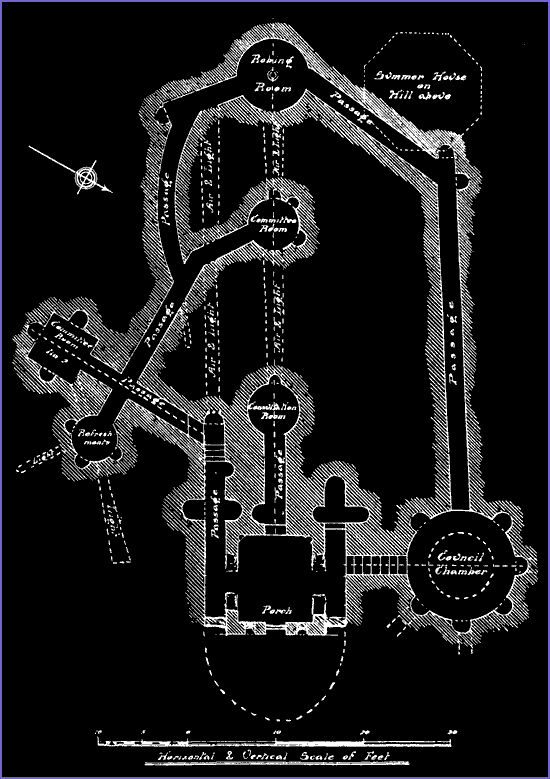 Website: Click Here ADDITIONAL INFORMATION  
GREAT BRITISH GROTTO GRADING
CONSTRAINTS On private property, Open set times only FACILITIES Access all Year, Access by Road, Access on Foot, Conducted Tours of Locality, Grotto - just one, Restaurant/Food, Retail Souvenir Shop, Toilets, Tourism Information LANDSCAPE Country town/village, Urban REGION England - Central THE FEATURES PRESENT +Cared for and maintained in good condition, +Crystals and/or minerals, either natural or simulated, +Dark and mysterious chambers and cave like spaces, +Fossils and/or shells incorporated into the decor, +Internal stonework that is natural, recycled or simulated to give a subterranean decor, +Viewing points from within to an intriguing landscape outside |
||||
|